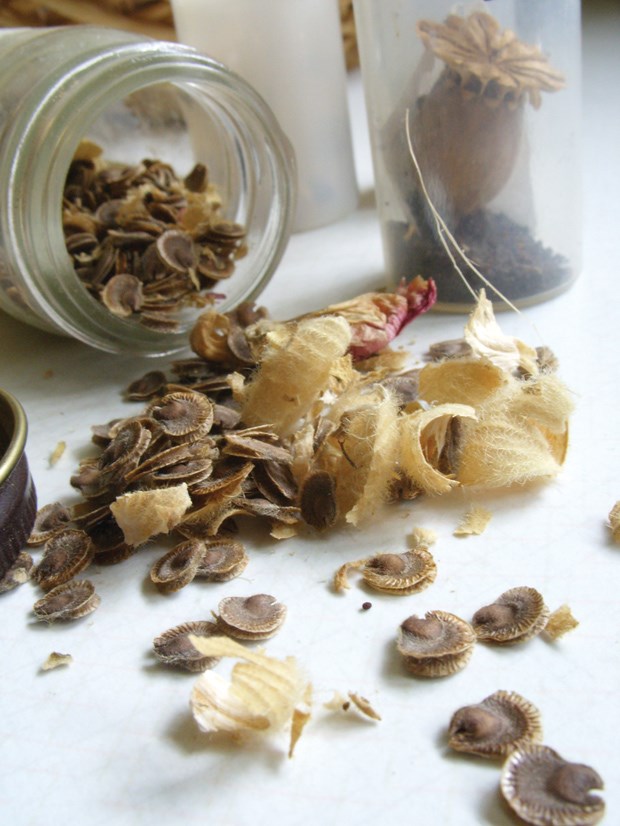According to the Food and Agriculture Organization of the United Nations, 75 per cent of plant genetic diversity has been lost to farmers worldwide since the early 1900s and 75 per cent of the world's food is generated from only 12 plants and five animal species.
The FAO also found through its research that of the 250,000 to 300,000 known edible plant species in the world, only 150 to 200 species are used by humans for food. For most people, statistics like those mean little in their daily lives as long as they can still buy bread and the standard assortment of fruits and vegetables at the grocery store. But to some people, the seed savers among us and those people who are concerned about biodiversity and agrobiodiversity, the loss of plant diversity means the loss of whole ancient plant lineages and much more. Loss of plant diversity can be seen in the grocery store and the garden centre. When is the last time you saw kohlrabi for sale in the grocery store? Don't know what kohlrabi is? Well, that's my point. What about fruit tree varieties - when is the last time that you saw anything except a red delicious or other common apple tree variety for sale in the garden centre? Beyond the important loss of genetic lineages, the loss of biodiversity in the supermarket and garden centre means fewer choices for consumers.
Globalization, industrialization and the arrival of the Frankenfoods (genetically modified food) on the world farming scene have left people concerned about the nutritional value of modern food and the safety of eating Frankenfoods. Those concerns are compounded by the fact that genetically modified species can escape from their farms on wind and water, making their way out into the natural world causing unintended and unforeseen consequences. Also displacing the historically rich diversity of food species is the intrusion into the food supply of the socalled exotic food species like mandarin oranges or bananas.
In response to those concerns and the complete failure of political leaders to protect diversity in the food supply, the seed savers of the world are hard at work collecting and storing seeds for future generations. According to Danielle Nierenberg of FoodTank.org, "Saving seeds doesn't only help improve agricultural biodiversity, it helps farmers and researchers find varieties of crops that grow better in different regions, especially as the impacts of climate change become evident." Since governments continue to be more concerned with the short term election cycles and obedience to big agribusiness, small scale farmers, local seed savers, non-profits and concerned citizens are taking matters into their own hands. There are now more than 1,000 seed banks and exchanges around the world working to preserve the genetic diversity of plants through long-term seed selection, harvest and storage.
There are many organizations that specialize in various aspects, preserving genetic diversity in the food system such as The World Vegetable Center (avrdc.org), a non-profit organization dedicated to alleviating poverty and improving nutrition through extensive research and outreach. The World Vegetable Center gene bank holds more than 59,500 different germplasms from 156 countries. There's also the Millennium Seed Bank Partnership, started by the Royal Botanic Gardens, Kew, which is the largest plant conservation project in the world that has saved 10 per cent of the world's wild plant species at their location in Wakehurst, England. Their seed bank has one billion seeds from 130 partnering countries.
Researchers at the seed bank can test centuries-old plants for medicinal purposes, assess horticultural value, and produce more seeds to increase global biodiversity.
Then there's the mother of all seed banks, the Svalbard Global Seed Vault located more than 1,100 kilometres south of the North Pole where seeds are stored at 18 degrees Celsius underneath the frozen ice of northern Norway. Sometimes called the doomsday vault, the Svalbard seed vault preserves seeds from around the world to ensure future food production and sustainable agriculture. Their seed vault can hold more than 2 billion seeds or some 4.5 million crop varieties at about 500 seeds per variety.
Closer to home there are many local seed companies offering a wide selection of seeds of vegetables, herbs, fruits and some ornamental plants. Many of our local seed companies follow organic growing practices and provide seeds of plants tested for our northern climate, which is especially useful when it comes to growing vegetables here in the often soggy and sometimes cool Northwest.
A great place to find a good listing of local and national seed companies that sell heirloom seeds, organic seeds and old varieties of vegetables or fruits can be found at Seeds of Diversity Canada (seeds. ca) which is a Canadian volunteer organization that conserves the biodiversity and traditional knowledge of food crops and garden plants.
Todd Major is a journeyman horticulturist, garden designer and builder, teacher, skills trainer and organic advocate. For advice contact him at [email protected]



